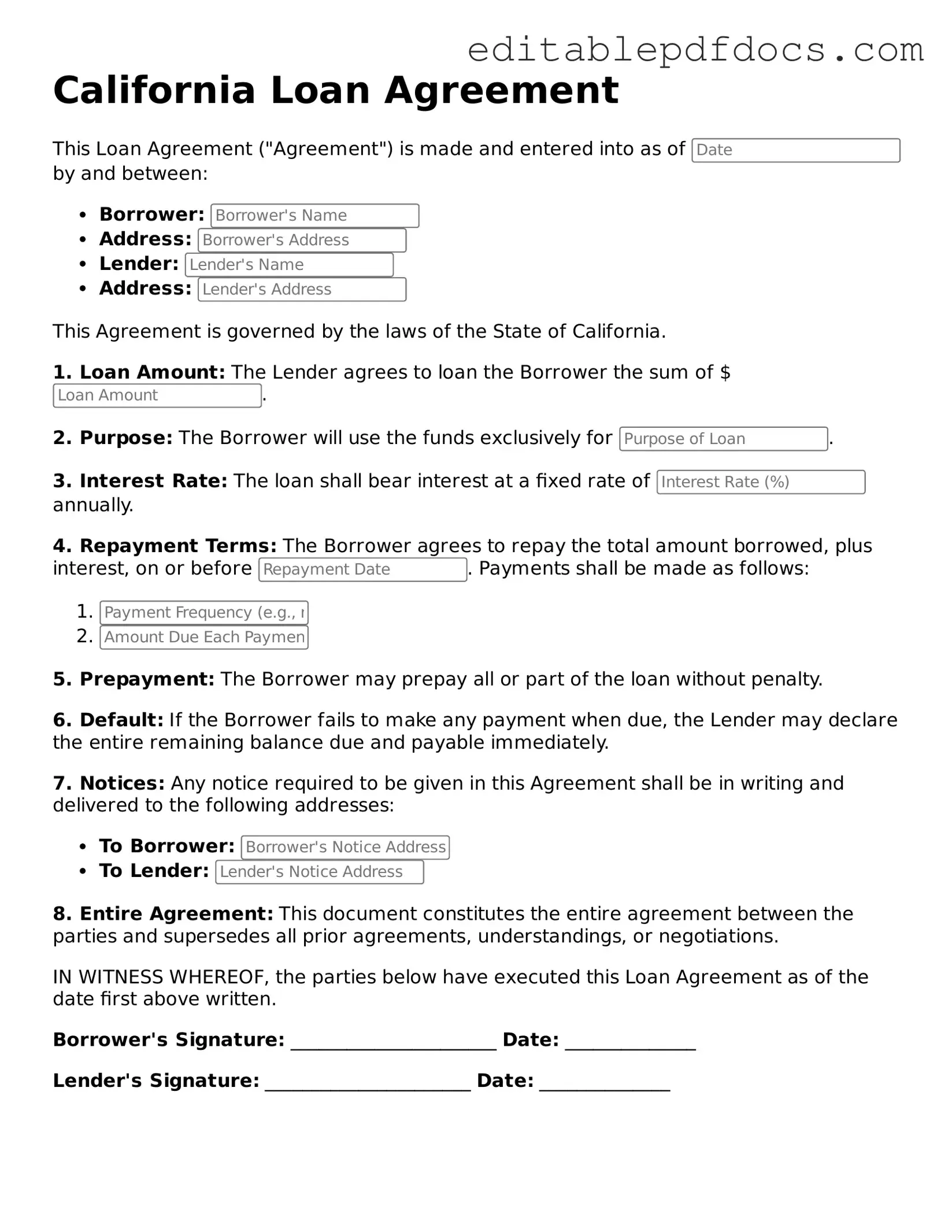When entering into a loan agreement in California, it is essential to understand the key components of the California Loan Agreement form. This document serves as a binding contract between the lender and borrower, outlining the terms and conditions of the loan. Major aspects include the loan amount, interest rate, repayment schedule, and any collateral involved. Additionally, the agreement often specifies the rights and obligations of both parties, addressing scenarios such as default and prepayment options. By clearly delineating these terms, the form aims to protect the interests of both the lender and the borrower, ensuring a mutual understanding of the financial arrangement. Moreover, it often includes provisions regarding fees, late payments, and legal recourse, providing a comprehensive framework for the loan transaction. Understanding these elements is crucial for anyone considering a loan in California, as it lays the groundwork for a transparent and enforceable agreement.
